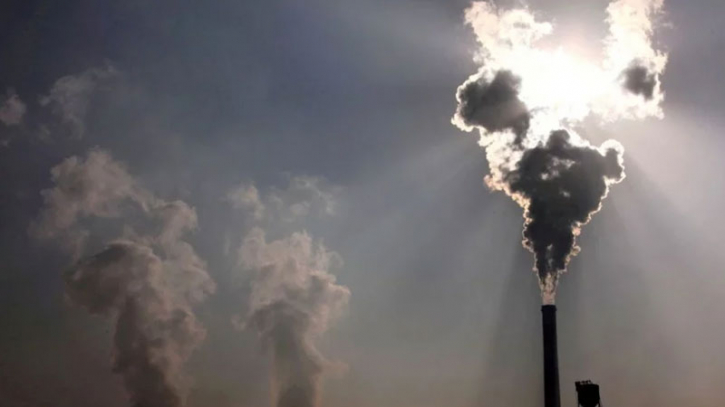New coal mines add question mark to India's climate commitments

At COP28, on December 9 last year, India’s environment and climate change minister Bhupender Yadav affirmed the country’s “trust and confidence” in the Paris Agreement, whilst highlighting the country’s achievements in emissions reduction. But this announcement was seemingly at odds with another made just three days earlier, when coal minister Pralhad Joshi confirmed that India intends to increase production for the fossil fuel.
Two weeks later, Joshi told the consultative committee meeting of the coal ministry that seven rounds of coal mine auctions had been completed and another two were ongoing. Within these rounds, 91 mines have been successfully auctioned, representing a maximum annual production capacity of approximately 221 million tons.
In the accompanying document, Joshi states: “Overall, large numbers of mines are under development to meet the domestic coal demand.”
In its Nationally Determined Contributions (NDCs), updated in 2022, India has made three major promises: a 45% reduction in its carbon emissions intensity (CO2 emissions per unit of electricity) based on 2005 levels, by 2030; 50% of installed electricity coming from non-fossil-fuel sources by 2030; and national carbon neutrality by 2070.
On the same day at COP28, the Indian government submitted its third “National Communication” to the UN Framework Convention on Climate Change (UNFCCC). In its executive summary, there is a curious formulation: “India’s emissions are likely to increase in line with growing energy demand and overall development, eventually reaching the envisioned goal of net-zero emissions in 2070.”
But, as of 2022, 65% of India’s CO2 emissions are from coal, and India’s rapid expansion of coal mines and plants might complicate the road to India achieving its ambitious climate goals.
Enhanced coal production
Despite the landmark 2015 Paris Agreement, which committed the countries of the world to lower carbon emissions, India has seen no need to reduce coal use. This is despite the fact that emissions for coal -- largely by China and India -- have been the biggest driver of recent carbon emissions, accounting for 40% of the total in 2021.
As the mainstay of its energy supply -- thermal power plants (coal, oil and gas) supply 56% (239 GW) of the country’s total installed electricity -- coal remains crucial for Indian energy security. To boost domestic supply rather than be reliant on coal, India has aggressively expanded its coal mines.
In a written reply to parliament in August 2023, the coal minister stated that a “major leap in coal production over the years has been witnessed”. From 2013 to 2014, Indian coal production was 565 million tons; from 2022 to 2023, that had increased by 58% to 893 million.
According to India’s 2023 National Electricity Plan, the country’s 2026-2027 domestic coal requirement will be an estimated 866.4 million tons, rising to 1.025 billion tons by 2031-2032. On December 18, the coal minister told parliament that domestic coal production is expected to grow by 6-7% annually.
The necessity of fossil fuels
In Yadav’s COP28 statement, the climate change minister says India has successfully reduced its greenhouse gas emissions intensity “vis-à-vis its GDP 33% between 2005 and 2019”, and “achieved 40% of installed electricity generation capacity through non-fossil-fuel sources”. These updates mean India is well on its way to fulfilling its NDCs. But they do not necessarily mean that India is on track to meet its 2070 goals of carbon neutrality.
According to a report by the environmental think-tank Ember, India is one of six G20 countries (the world’s 20 largest economies) in which per capita coal power emissions increased between 2015 and 2022, experiencing a 29% increase in seven years. Additionally, the report states that like China, India “is experiencing rapid electricity demand growth, which is outpacing even the massive renewables expansion in recent years.”
It is, though, worth noting that despite this increase, India had the lowest per capita emissions among G20 countries according to the Climate Tracker 2022 report, and less than a third of the average of all G20 countries.
Time for longer-term thinking
Trupti Mishra is a professor at the Indian Institute of Technology Bombay who specializes in the economics of pollution and climate change. She believes India is on track to meet its 2030 NDCs, even as its per capita coal power emissions rise. Mishra told The Third Pole that India has progressed well in expanding its renewable energy capacity, and that lowering the carbon intensity of its overall emissions is not the challenge.
But India must be serious about moving beyond coal if the country is to achieve net zero by 2070, she says, stressing that the plan for the phase out of coal -- and its details -- are important. “It should not be at [an] aggregate level; rather, some regional-level planning is required to identify the scope for phasing out [coal plants] and the timelines,” she adds.
India’s “ambitious” updated NDCs are a successful “balancing act [of mitigation] and economic growth requirements,” Mishra says. But she notes that there is “great scope” for improvements, recommending the restricting of finance for fossil fuel projects, greater infrastructure support for clean energy, better implementation of policies, and sector-specific approaches that sufficiently deal with on-the-ground realities.
Writer: Rejimon Kuttappan is an independent journalist and author of Undocumented (Penguin-2021) Find him on Twitter @rejitweets.
Source: Third Pole
.png)




